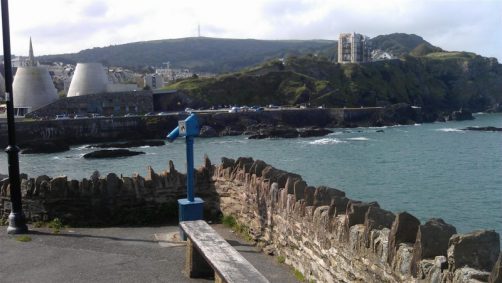Capstone Parade is said to have been built between 1842 and 1843 as an unemployment scheme. In true Victorian style this walk provides a host of stunning views across Ilfracombe and the surrounding coast. The walk is surfaced and has relatively gentle slopes along the main path which take you around the edge of the the Capstone Promontory. Steeper paths also cut up the front and back of Capstone hillside – rewarding efforts with panoramic views from the top. Close by are the grey sands of the small Wildersmouth beach.
Arts and literature
Ilfracombe has been home to many distinguished authors over the past few hundred years. These have included Madame D’Arblay (aka Frances or ‘Fanny’ Burney), a prolific playwrite and novelist whose local experiences inspired an terrifying account about the Ilfracombe coast, Charles Kingsley who recuperated from illness in fashionable Ilfracombe, and George Elliot.
History
Local legend states that in 1797 the ladies of Ilfracombe, in order to suggest to an invading French fleet that the town had a garrison of soldiers, paraded on Capstone Hill in their red petticoats.
The chief organiser was one Betsy Gammon who beat a drum around the town to rally the ladies. To add credence to the story, the drum she used and a red shawl can been seen in the nearby Ilfracombe Museum.
Apparently, the ruse was successful and the ships went away. There are many who lay claim to this story, and according to R N Worth in his “History of Devon” ‘there is hardly a seaport in Devon that has not some tradition of invaders being scared by a muster of old women in red cloaks. The Welsh lay claim to this too, and interestingly, the Welsh National Costume is a red cloak and black hat.
Fact or fiction? There is no doubt that at least three French ships sailed up the Bristol Channel in February 1797 and this was much recorded at the time. The so called “invasion party”, eventually landed at Llawanda in South Wales, where they were quickly rounded up by the local militia.


